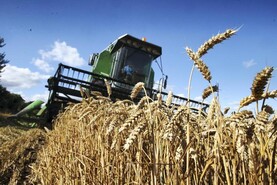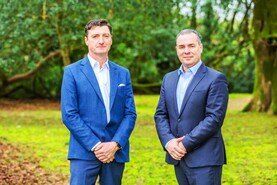This week was the first time I heard of bona fide farmers, rather than agri business companies, receiving notification from their bank that they were going to be charged a “negative interest rate” on their cash balances. We have come full circle on interest rates in Irish agriculture. In the very early 1980s, they reached a peak of 20% and over that in some cases. The damage done to farm incomes and family wellbeing sparked a major reassessment by the banks of their agricultural lending policies.
Those who had borrowed to purchase land were particularly badly affected
The IFA developed a policy to deal with the banks on behalf of their members, who found themselves with spiralling debts taken out in the mid to late 1970s to carry out recommended farm development work that boomed after EU entry in 1973. Those who had borrowed to purchase land were particularly badly affected and a policy emerged where the purchased land was, in the main, to be sold voluntarily with a ‘manageable’ level of debt attached to the original farm. With a national policy to maintain a link between the then Irish Pound with the German Mark but a total absence of any common economic policy, Irish inflation roared ahead – along with Irish interest rates.
Ultimately, Ireland had to unilaterally devalue the Irish pound within the European Monetary System
But Irish agriculture and farmers had the worst of both worlds in those pre-euro days, with farm prices tied to common CAP levels but domestic inflation and interest rates totally governed by the internal Irish dynamics, which included a policy of maintaining a fixed exchange rate with the German Mark and French Franc. Ultimately, Ireland had to unilaterally devalue the Irish pound within the European Monetary System – the forerunner of the euro. Since then, interest rates have steadily declined, but nobody envisaged that central banks would flood the world with liquidity, driving down the cost of money while the European Central Bank charged member states’ banks for depositing funds with it. Never have we, or our forebearers, seen capital having no value. For individual farmers, the balance is between keeping enough cash to have flexibility to cope with the inevitable ups and downs of farming life, but not having so much assets in cash that they are exposed to continuous reduction in value in real terms as well as new negative interest rates – not an easy balance to achieve.
Read more
Down to Agribusiness Podcast: CAP talks, Brexit red tape and cheese for China
Omega-3 enriched chicken and eggs shown to lower blood pressure
This week was the first time I heard of bona fide farmers, rather than agri business companies, receiving notification from their bank that they were going to be charged a “negative interest rate” on their cash balances. We have come full circle on interest rates in Irish agriculture. In the very early 1980s, they reached a peak of 20% and over that in some cases. The damage done to farm incomes and family wellbeing sparked a major reassessment by the banks of their agricultural lending policies.
Those who had borrowed to purchase land were particularly badly affected
The IFA developed a policy to deal with the banks on behalf of their members, who found themselves with spiralling debts taken out in the mid to late 1970s to carry out recommended farm development work that boomed after EU entry in 1973. Those who had borrowed to purchase land were particularly badly affected and a policy emerged where the purchased land was, in the main, to be sold voluntarily with a ‘manageable’ level of debt attached to the original farm. With a national policy to maintain a link between the then Irish Pound with the German Mark but a total absence of any common economic policy, Irish inflation roared ahead – along with Irish interest rates.
Ultimately, Ireland had to unilaterally devalue the Irish pound within the European Monetary System
But Irish agriculture and farmers had the worst of both worlds in those pre-euro days, with farm prices tied to common CAP levels but domestic inflation and interest rates totally governed by the internal Irish dynamics, which included a policy of maintaining a fixed exchange rate with the German Mark and French Franc. Ultimately, Ireland had to unilaterally devalue the Irish pound within the European Monetary System – the forerunner of the euro. Since then, interest rates have steadily declined, but nobody envisaged that central banks would flood the world with liquidity, driving down the cost of money while the European Central Bank charged member states’ banks for depositing funds with it. Never have we, or our forebearers, seen capital having no value. For individual farmers, the balance is between keeping enough cash to have flexibility to cope with the inevitable ups and downs of farming life, but not having so much assets in cash that they are exposed to continuous reduction in value in real terms as well as new negative interest rates – not an easy balance to achieve.
Read more
Down to Agribusiness Podcast: CAP talks, Brexit red tape and cheese for China
Omega-3 enriched chicken and eggs shown to lower blood pressure






 This is a subscriber-only article
This is a subscriber-only article










SHARING OPTIONS: